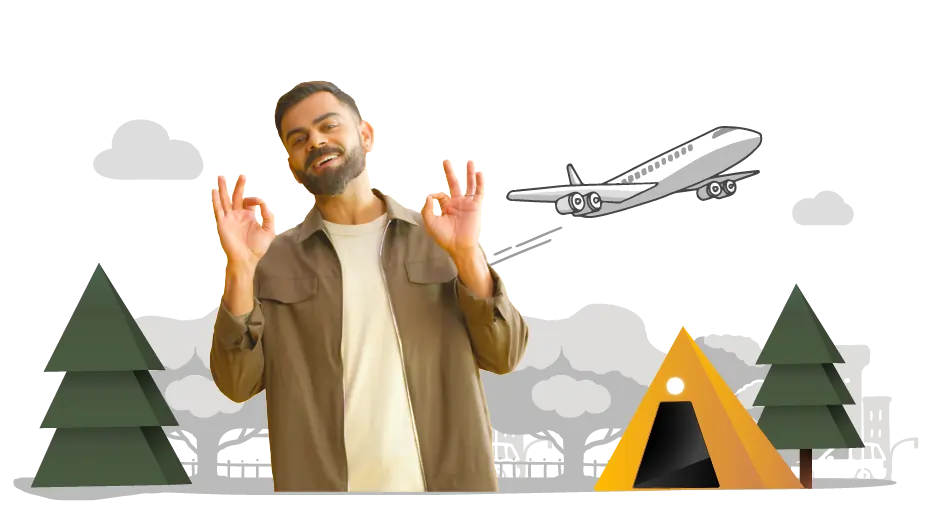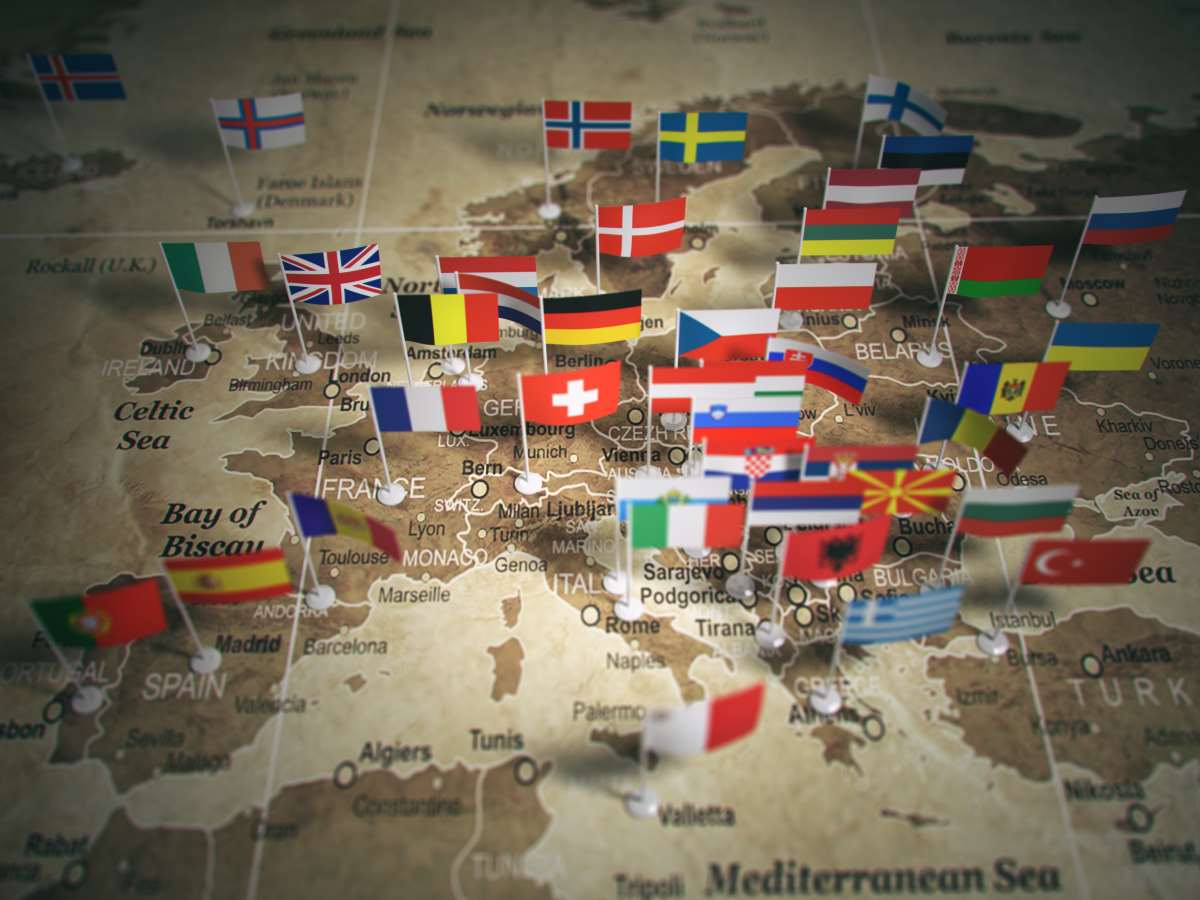1. Austria
Austria, which is bordered by 8 countries, is located in Central Europe. It is a landlocked country with 8.9 million inhabitants in Central Europe. This country signed the Schengen agreement on 28th April 1995.
2. Portugal
Portugal, which falls in the Schengen Zone, shares borderlands with Spain. It has a population of around 10.1 million (approx.) residents. It signed the Schengen agreement on 25th June 1991.
3. Germany
It is located in Western and Central Europe, with Poland and the Czech Republic bordering the east and Denmark in the north. This Central European country borders nine nations. Germany has a population of 84 million people. It signed the Schengen agreement on 14th June 1985.
4. Czech Republic
The Czech Republic is one of the European Schengen countries. This landlocked country is bordered by Germany, Poland, Slovakia and Austria. It has a population of approximately 10.7 million as of 2016. It signed the Schengen agreement on 16th April 2003.
5. Poland
Poland is located in Central Europe. It is home to nearly 37.8 million residents. It signed the Schengen agreement on 16th April 2003.
6. Italy
Italy is a part of Schengen countries, located in the heart of the Mediterranean Sea. It is bordered by Switzerland, France, Slovenia, Austria, the Vatican City and San Marino. Nearly 60.2 million people reside in Italy. It signed this agreement on 27 November 1990.
7. Luxembourg
Luxembourg has a population of 650,847 residents. It signed the Schengen agreement on 14th June 1985.
8. Estonia
Estonia, a country in northeastern Europe, is bordered by 3 Baltic states. Latvia surrounds it in its south, the Baltic Sea in its west, Lake Peipus and Russia in the east and the Gulf of Finland to the north. It is home to nearly 1.3 million residents. The Estonian government signed the Schengen agreement on 16th April 2003.
9. Latvia
Latvia shares borders with Lithuania in the south, Estonia in the northern region, Russia in the east and Belarus in the southeast. It has a population of nearly 1.8 million people. It signed the Schengen agreement on 16th April 2003.
10. Spain
Part of the Schengen countries, Spain shares borders with France in the north and the Bay of Biscay. It has a population of 46.7 million residents. Spain signed the agreement on 25th June 1991.
11. Lithuania
Lithuania shares a border with Poland to the south, Latvia to its north, Belarus to the east and south, and Kaliningrad Oblast in the southwest. It has a population of 2.9 million residents. Lithuania signed the Schengen agreement on 16 April 2003.
12. Finland
Finland is located in northern Europe and is home to nearly 5.5 million residents. Sweden borders it to the northwest, Norway to the north and Russia to the east. It signed the Schengen agreement on 19th December 1996.
13. Iceland
Iceland is located in the North Atlantic. It has a population of nearly 376,248 people. It first signed the Schengen agreement on 19th December 1996, followed by a second agreement on 18th May 1999.
14. Slovenia
Italy borders Austria to the north, Slovenia to the west, Croatia to the southeast and Hungary to the northeast. It has a population of 2 million. The country signed the Schengen agreement on 16th April 2003.
15. Slovakia
Slovakia is a landlocked country in Central Europe and is home to nearly 5.5 million residents. It shares borders with Ukraine in its east, Poland in the north, the Czech Republic to its west, Austria in the southwest and Hungary in its south. Slovakia signed this Schengen agreement on 16 April 2003.
16. Denmark
Denmark occupies the peninsula of Jutland, which extends northward from the centre of continental Western Europe. Nearly 5.8 million people live in Denmark. It signed the Schengen agreement on 19th December 1996.
17. Hungary
Hungary is a part of the list of Schengen countries. It is located in Central Europe and is home to nearly 9.6 million residents. Serbia surrounds it in the south, Slovakia in the north, Romania in the east and Slovenia in the west. It signed this Schengen agreement on 16th April 2003.
18. Malta
Malta consists of an archipelago in the Mediterranean Sea. It has a population of 444,409 residents. Malta signed this Schengen agreement on 16th April 2003.
19. Switzerland
Switzerland is landlocked between France in the west, Italy in the south, Austria and Liechtenstein in the east and Germany in the north. It signed this Schengen agreement on 26 October 2004.
20. Belgium
Belgium is a low-lying country in Western Europe. It is bordered by the Netherlands, France, Luxembourg and Germany. Moreover, Belgium is a federal state divided into three regions francophone Wallonia, Dutch-speaking Flanders and Brussels. Belgium signed the Schengen agreement on 14th June 1985.
21. France
France is located on the western edge of Europe. The English Channel surrounds the country in the northwest, the Bay of Biscay in the west, the North Sea in the north and the English Channel in the northwest. It has a nearly 65.6 million population. It signed the Schengen agreement on 14th June 1985.
22. Liechtenstein
Liechtenstein is a doubly landlocked microstate in Central Europe. It has a population of 38,395 residents. Liechtenstein signed a Schengen association agreement with the European Union on 28th February 2008.
23. Greece
Greece falls under the Schengen country name list. It is located at crossroads of Asia, Europe, and Africa. It is home to nearly 10.2 million residents. Greece signed the Schengen agreement on 6th November 1992.
24. Norway
Norway is surrounded by Skagerrak strait in its south, Finland and Russia in its northeast and Denmark on another side. Nearly 5.5 million people reside in this country. It signed the Schengen agreement on 19th December 1996, followed by a second agreement on 18th May 1999.
25. Sweden
Sweden is located in Northern Europe. It shares borders with Finland and Norway. It is home to nearly 10.2 million residents. Sweden signed this agreement on 9th December 1996.
26. Netherlands
Netherlands borders Belgium to its south, Germany to its east, and the North Sea to its northwest. It has nearly 17 million residents. Netherlands signed the Schengen agreement on 14th June 1985.
Now let us check the advantages a Schengen visa holder can experience on his/her travel.
27. Croatia
Situated in Southeast Europe, Croatia is bordered by Slovenia and Hungary to the north, Serbia, Bosnia and Herzegovina to the east, Montenegro to the south and the Adriatic Sea separating Italy from Croatia to the west. A little over 4 million people populate the country. Croatia signed the Schengen agreement on 1st January 2023, becoming the 27th member of the Schengen Area.
28. Romania
Romania, one of the largest countries in Europe is the latest full member of Schengen area. People from India now can visit the breathtaking places of Romania along with other Schengen countries with a Schengen visa.
29. Bulgaria
Bulgaria joined the Schengen area as a full member in January 2025. With mesmerizing tourist destinations, this country offers a mix of Eastern and Western culture.













 Tools & Calculators
Tools & Calculators










